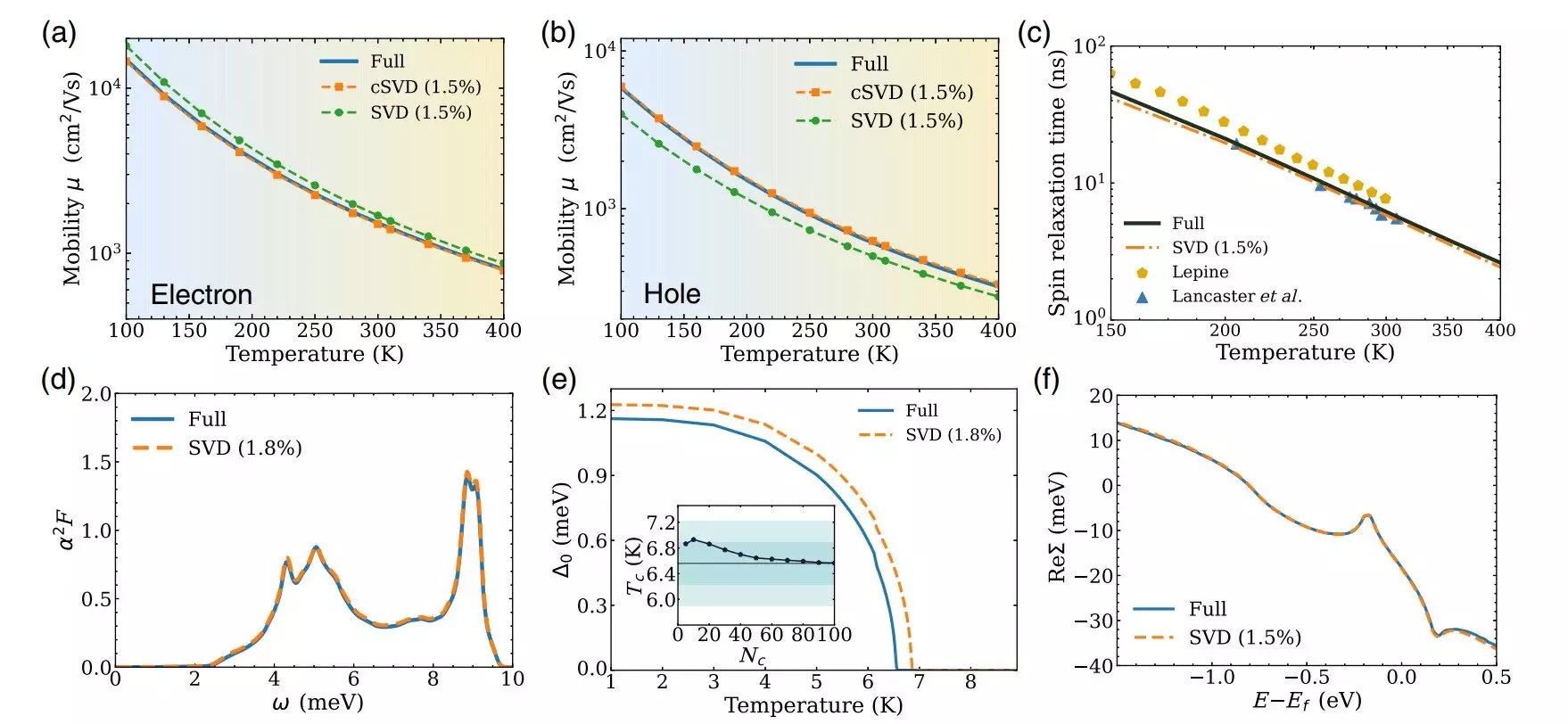In the field of materials physics, scientists and engineers are constantly seeking to understand how electrons interact and move within new materials, as well as how these behaviors impact the devices created with them. Questions surrounding the ease of electrical current flow, superconducting temperatures, and the preservation of electron spin states are at the forefront of research in this area.
A recent breakthrough by a team of researchers at Caltech has revolutionized the way calculations are performed in materials physics. By utilizing a data-driven method, the team has been able to simplify complex calculations, making them up to 50 times faster while maintaining accuracy. This advancement not only accelerates computations but also opens up possibilities for exploring new calculations that were previously considered unattainable.
The innovative approach developed by the Caltech team involves the use of compressed matrices to represent electron interactions within materials more efficiently. By using only a small fraction of the typical data required for such calculations, researchers can significantly reduce computing time and memory usage. This method reveals the most critical interactions that dictate the properties of materials, streamlining the process and providing valuable insights.
Central to this new technique is the application of singular value decomposition (SVD) to electron-phonon interactions in materials. By separating the electronic and vibrational components in large matrices of interactions, the SVD method assigns importance values to each fundamental interaction. This enables researchers to extract key information and generate minimal models of material interactions, striking a balance between simplicity and accuracy.
One of the major benefits of the SVD-based approach is the newfound physical intuition it provides researchers about electron interactions in materials. By identifying dominant singular values and interactions, scientists gain valuable insights into the behavior of materials at the atomic level. This method has been shown to provide accurate results for various material properties, such as charge transport, spin relaxation times, and superconductor transition temperatures.
The Caltech team is actively working on expanding the application of the SVD method to a broader range of material interactions, with the goal of enabling advanced calculations that were previously deemed unfeasible. In addition, the researchers are integrating this new approach into their open-source Perturbo code, allowing the wider scientific community to benefit from faster predictions of material properties associated with electron-phonon interactions.
The groundbreaking advancements made by the Caltech team in the field of materials physics research have the potential to significantly impact the way scientists and engineers approach calculations and simulations in this domain. By combining data-driven methods with singular value decomposition techniques, researchers are unlocking new opportunities for understanding and predicting the behaviors of materials at the quantum level, paving the way for future innovations in materials science and engineering.


Leave a Reply